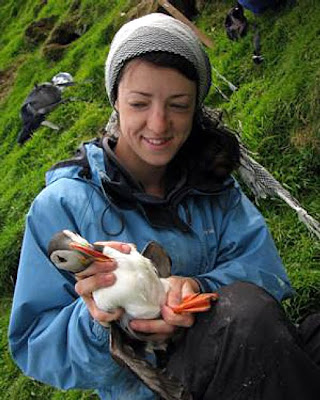"Dear all,
The Eurasian Hobby is a small falcon. It breeds across Europe and Asia and is a long-distance migrant. European birds winter in Africa. More than 5,700 Hobbies have been ringed in 10 European countries, but so far there have been only two ring recoveries south of the Sahara desert. Satellite tracking using the Argos system is now an accepted technique for long distance migration studies of birds. It is generally accepted that any device we burden a bird with should weigh no more than 3% of the bird's weight if we are not to affect its behavior.
Method
The prototype of the smallest satellite transmitter (PTT) produced so far weighing just 5 g was fitted by me for the first time to an adult female Hobby (weight 265 g) on 9 August 2008 in Germany near Berlin and successfully recorded the annual migration route.
 The Hobby had raised two offspring and was trapped near its eyrie using the dho-ghaza-method. This new type of solar-powered PTT was still in the trial phase and is still working (in August 2009).
The Hobby had raised two offspring and was trapped near its eyrie using the dho-ghaza-method. This new type of solar-powered PTT was still in the trial phase and is still working (in August 2009).Results
This smallest and lightest satellite transmitter produced to date delivered astoundingly high numbers of good Argos Doppler fixes (LC:2 and LC:3).
After leaving on migration in the second week of August, and a short rest period on the island of Elba off the west coast of Italy from 6 to 13 September, the bird flew at first in a southerly direction towards North Africa. The falcon held this course more or less until reaching its main wintering area in Southern Angola on 17 October. The migration to southern Angola took 49 days including some days on the island of Elba and one day (8 October) in Cameroon when the falcon was not moving. On average the falcon migrated 174 km per day including the days when it did not migrate.
Map
Outward migration route in 2008 up to the southernmost point in Zimbabwe not showing local movements during wintering in Angola. Copyright by B.-U. Meyburg, 2009
 A summary of the results with further details has recently been presented at the 7th Conference of the European Ornithologists' Union 2009:
A summary of the results with further details has recently been presented at the 7th Conference of the European Ornithologists' Union 2009:K.D. Fiuczynski, P. W. Howey, C. Meyburg & B.-U. Meyburg (2009):
Intercontinental migration of an Eurasian Hobby (Falco subbuteo) tracked by means of a 5g satellite transmitter. 7th Conference of the European Ornithologists' Union 2009, University of Zurich, Switzerland, 21 - 26 August 2009.
For the poster see:
http://www.raptor-research.de/pdfs/a_sp100p/a_sp140.pdf
&
http://www.Raptor-Research.de
In July and August 2009 I have been able to trap eight more adult Hobbies and mark them with even smaller solar-powered satellite tags (size: 9.3 x 30 x 16.4 mm ). From these transmitters we already received much better results during the last few weeks in the breeding area than from the first PTT in 2008. One surprising result has been an adult female which migrated 300 kms north from her breeding site after the fledging of her offspring to reach the coast of the Baltic Sea in western Poland.
Kind regards,
Bernd Meyburg
Prof. Dr. Bernd-U. Meyburg"



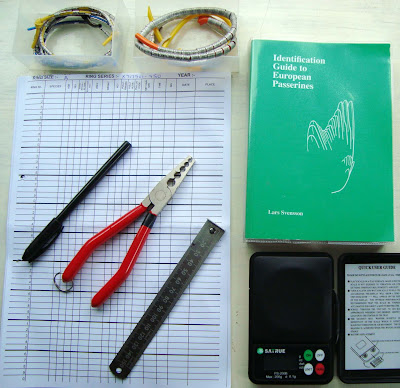 "NET SET..."
"NET SET..."  (...count up to 90 minutes...) "GO!"
(...count up to 90 minutes...) "GO!" And just to prove it had a head...
And just to prove it had a head...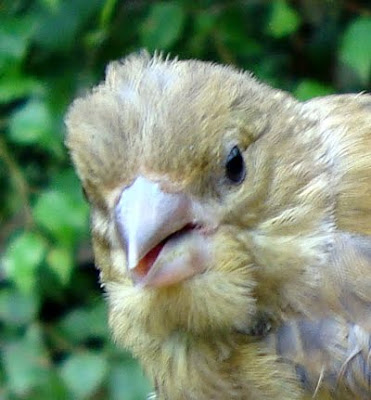 Mick P.
Mick P. We finished on 66 birds (including only 5 retraps) with Whitethroats (above) and Blackcaps (below) the most numerous. We also had the first half decent Long-tailed Tit flock move through of which we caught 9.
We finished on 66 birds (including only 5 retraps) with Whitethroats (above) and Blackcaps (below) the most numerous. We also had the first half decent Long-tailed Tit flock move through of which we caught 9. We took down before 11:00 due to the wind and the last round produced a moulting young Great Spotted Woodpecker.
We took down before 11:00 due to the wind and the last round produced a moulting young Great Spotted Woodpecker. Other records of note included both Greenshank and Green Sandpiper over and a possible Whimbrel heard. Several Yellowhammers were flying about and lone House Sparrow looked a little out of place. Still lots of Common Blues. Here's a happy couple next to one of the nets.
Other records of note included both Greenshank and Green Sandpiper over and a possible Whimbrel heard. Several Yellowhammers were flying about and lone House Sparrow looked a little out of place. Still lots of Common Blues. Here's a happy couple next to one of the nets.


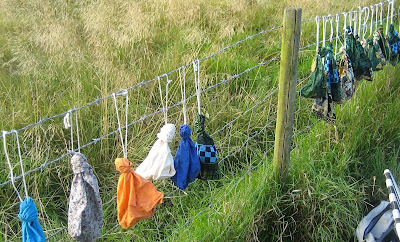


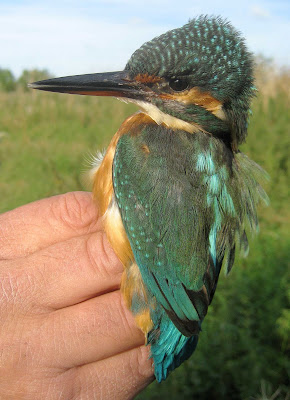
 This is now officially Meisha’s second favourite bird after Barn Owl. As usual, it was very obliging and happily reclined on our balance.
This is now officially Meisha’s second favourite bird after Barn Owl. As usual, it was very obliging and happily reclined on our balance. For those of you who have not handled Kingfishers before, this behaviour is quite normal and birds generally remain still or seemingly move in slow motion when caught. After a few seconds on their stomachs they suddenly spring to life and speed off. It's a tactic that works surprisingly well with cats which invariably put them down on the floor once they go limp and before they know what's happened the bird has gone.
For those of you who have not handled Kingfishers before, this behaviour is quite normal and birds generally remain still or seemingly move in slow motion when caught. After a few seconds on their stomachs they suddenly spring to life and speed off. It's a tactic that works surprisingly well with cats which invariably put them down on the floor once they go limp and before they know what's happened the bird has gone. It was clear all morning, but windy and this prevented us from carrying on much after midday. There were few sight records of any note. Up to 200 Sand Martins appeared in a bunch at first light, clearly straight out of a roost somewhere nearby. A trickle of Swallows and House Martins also passed over but no Swifts. The only insects of note were 2 Hornets.
It was clear all morning, but windy and this prevented us from carrying on much after midday. There were few sight records of any note. Up to 200 Sand Martins appeared in a bunch at first light, clearly straight out of a roost somewhere nearby. A trickle of Swallows and House Martins also passed over but no Swifts. The only insects of note were 2 Hornets.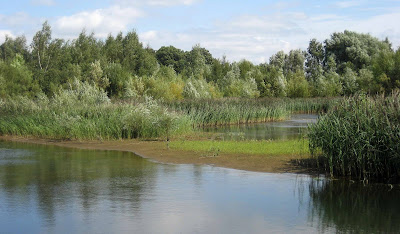
 It had been brought in because it was slightly injured and it was off to a rehab centre. Nice to see a full grown Buzzard in the hand.
It had been brought in because it was slightly injured and it was off to a rehab centre. Nice to see a full grown Buzzard in the hand. As usual, this is an old crow's nest and this one was at the end of an alarmingly spindly willow branch. Good work Mick.
As usual, this is an old crow's nest and this one was at the end of an alarmingly spindly willow branch. Good work Mick.

 Sight records included good numbers of Sand Martins flocking up along with smaller numbers of Swallows and House Martins. A single Swift was all we could manage. Have they gone? Green Sandpiper, Teal, Jay and Grey Wagtail all flew over and small groups of young Common Terns were knocking about all morning. On the A52 side, 2 Sandwich Terns came over. Fairly good numbers of dragonflies but damselflies were not as common as you might expect at this time. A few butterflies included a Brimstone and several Commas.
Sight records included good numbers of Sand Martins flocking up along with smaller numbers of Swallows and House Martins. A single Swift was all we could manage. Have they gone? Green Sandpiper, Teal, Jay and Grey Wagtail all flew over and small groups of young Common Terns were knocking about all morning. On the A52 side, 2 Sandwich Terns came over. Fairly good numbers of dragonflies but damselflies were not as common as you might expect at this time. A few butterflies included a Brimstone and several Commas.
 Expedition member Kate Thompson (24) with the Puffin (34):
Expedition member Kate Thompson (24) with the Puffin (34):